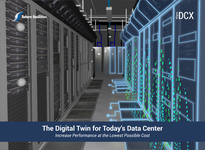Even before the recent global pandemic, high street banks were closing at an alarming rate. Research from Which? puts the rate of closures in the UK at more than a third over the past five years at a rate of 55 per month.
The rise of banking apps and their ever increasing features has reduced the number of reasons for customers to visit a physical branch. For instance, the latest apps now allow customers to do day-to-day jobs like checking their balance and manage payments, but also to pay in checks, access loans, savings and even speak to advisors. However, the rise in online banking is not without problems, especially for infrastructure that is coming under increased workloads. With network providers like Vodafone seeing a 50 percent increase in traffic as a result of Covid-19, banking apps are coming under increased pressure at a time when they have never been more important.
Accessing finances remotely is absolutely crucial to consumer and businesses customers alike. With physical branches now closed due to Covid-19, apps, online banking and the infrastructure that powers them needs to be more reliable than ever before. However, with such a huge increase in usage in such a short period of time, there is naturally added strain on data centers; notably the network, power and cooling capacity that they have. Monitoring and ensuring the ongoing reliability of these areas is now a business-critical issue given the stakes that are at play.
Reliability and resilience
And these are very real issues. Only a few weeks ago, Lloyds Bank and Halifax users were locked out of their accounts due to an IT outage. At the time, it was an inconvenience for most customers, but now it would be a serious issue for all their customers. In order to combat this, banks need to embrace technology that helps to run data centers more efficiently, such as the digital twin.
The digital twin is a technology that specifically creates a virtual model of a real world object. As a digital representation it can be easily moved around, tested in different conditions, and predict changes in performance over time–all at the click of a button! For banks and their data centers, this means that operators and managers can test the thermal efficiency of the data center, and see how they can increase capacity without negatively impacting reliability. Once the optimal setup has been achieved and proved to work virtually, it can then be reflected in the physical data center, all safe in the knowledge it has already been tested.
For infrastructure that is coming under unprecedented loads, knowing that the data center has been safely tested before implementation means that capacity and resilience can be added in quickly and safely. In fact, the use of a digital twin has been shown to greatly reduce the risk of unplanned outages. Future Facilities research found that three times as many businesses using a digital twin hadn’t seen an outage in a 12 month period, compared to those who didn’t use the technology. This means that banks can make sure their services are as reliable as possible for customers going through otherwise uncertain times.
Bring focus to our future
Taking this approach has other benefits too such as meeting Sustainable Development Goals (SDGs). With recent reports showing that 79 percent of millennial employees are loyal to companies that care about their effect on society, it pays to become as sustainable and carbon-neutral as possible. The benefits, in addition to a healthier world, are huge. Increased customer loyalty, higher employee retention and even reduced running costs for the business; just to name a few.
Longer term and beyond Covid-19, the number of customers using apps to carry out banking will continue to rise, and require vast amounts of energy to keep the necessary data flowing. The backend process that consumers don’t see or hear about, is the large amount of energy needed to power the racks of computer servers within the data centers. While some centers are powered by clean energy sources, the industry as a whole is currently unable to meet these rising levels of demand without using carbon-based energy sources as well. This is where technology like the digital twin can assist, as working at optimal levels of capacity will contribute to the reduction of a bank’s overall carbon footprint.
The reliability of digital banking has never been more important. Beyond conversations around customer experience, outages will now have significant consequences for customers that cannot be taken lightly. The data center is very much at the heart of this. And while loads and capacity will continue to increase, the good news is that technology and solutions exist that can help with this. Using available technologies, such as the digital twin, can help keep critical services such as banking running during these uncertain times.





